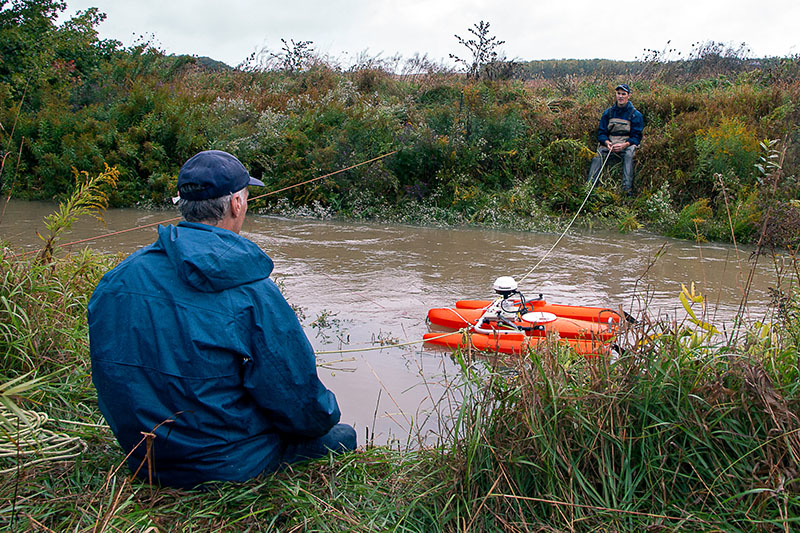Specialized Tool Required to Measure Extreme Flows (UTRCA Weekly, January 28, 2022)
In the Upper Medway Creek subwatershed, a late September 2021 rainfall event of 75 mm produced higher-than-normal stream flows for the time of year. UTRCA Conservation Services staff are monitoring the creek as part of a targeted subwatershed project that is studying the impacts of Best Management Practices, such as cover crops, on water quality.
To calculate the amount of nutrient runoff from the watershed, staff need to take measurements to correlate water levels to flow rates under a range of conditions. This level-flow relationship is called a rating curve, and is site-specific. Typically, staff are able to wade into the creek and measure flow using a handheld unit. However, when streams rise to the levels seen in September, a different method is needed to safely measure flows. In these conditions, an Acoustic Doppler Current Profiler (ADCP) boat is pulled back-and-forth across the watercourse to capture a flow profile. It is crucial to capture accurate data during high flow events, as they are important drivers of annual nutrient losses from farming watersheds.

Mike Funk, Agricultural Soil and Water Quality Technician, shared why this is important, saying, “Nutrient concentrations in watercourses are typically elevated during runoff events. This, combined with the greater volume of water associated with runoff events, means that nutrient loads from high-flow events are more significant than those from low-flow periods.”
Monitoring in the Upper Medway subwatershed is funded in part by the On-Farm Applied Research and Monitoring (ONFARM) program, a four-year, applied research initiative that began in 2019, which supports soil health and water quality research on farms across Ontario. The ONFARM program is funded by the Canadian Agricultural Partnership, a five-year federal provincial-territorial initiative. The project was also undertaken with the financial support of the Government of Canada through the federal Department of Environment and Climate Change.

